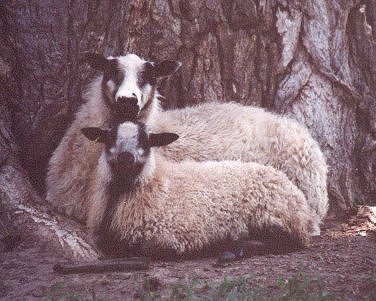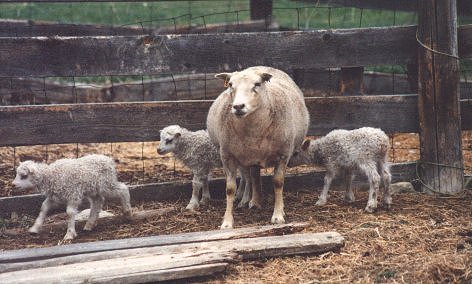Reproduction

Reliable twinners — Most ewes will twin in their second year and thereafter. About 15% will triplet.
Lamb easily — The lambs are small, averaging 5 to 7 pounds, which makes delivery easier and decreases birthing problems.
Excellent mothering instincts — Even ewe lamb mothers claim their twins and are doting caring mothers. They are fast to clean their lambs, bond well, are attentive and keep good track of their babies.
Strong lively newborns — Lambs jump right up, aggressively find the udder and nurse within minutes.
Excellent milking abilities — Icelandic sheep were used for producing dairy products up until 40 years ago in Iceland. Ewes can easily produce enough milk for triplets. Good udder attachment.
Market weight reached 4 to 5 months from birth — Lambs weigh 90 to 110 pounds by Sept/Oct. Ram lambs need no castration because they reach market weight before they come into rut. (Our ram lambs weighed between 80 and 112 pounds at 121 days after birth.)
Rate of gain — Our lambs gain between 3/4 to1 pound per day on mother's milk and good clover/grass pasture alone… no creep feed for lambs, no grain or supplement for their dams.

Early maturity — Ewe lambs will easily breed at 7 months and lamb at 1 year. Ram lambs are able to service up to 30 ewes at 7 months of age.
Long production life — Many ewes produce into their 13th year or longer.
Strong seasonal breeders — Ewes cycle naturally from mid November through April. It may be possible to develop a flock that lambs in the fall to supply the Easter market.
Good terminal sire candidates — Because this breed is unrelated to modern breeds and has a meat conformation, lambs produced from a cross to modern breeds should produce maximum hybrid vigor and gain in market lambs.